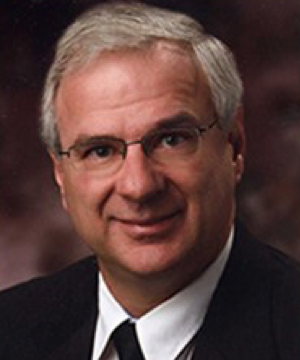2018 Opioid Epidemic Forum Agenda
Agenda
Day One, July 16, 2018
7:15am – 8:00am
Conference Registration & Networking Breakfast
8:00am – 8:15am
Chairperson’s Remarks
8:15am – 9:00am
How Pharmacists Can Lead an Opioid Exit Plan
Managing postoperative pain while providing patient education is essential to fighting the opioid epidemic. As medication experts, pharmacists are key personnel in identifying non-opioid analgesic regimens for patients. This session will cover the role of pharmacists in managing acute pain in postoperative patients. Topics to be discussed will include:
- The role of pharmacists in developing and implementing opioid-sparing postoperative analgesic regimens
- Approaches to managing postoperative pain in patients with a history of opioid use disorder
- Planning appropriate analgesic regimens for hospital discharge, including identification of high-risk patients
- Strategies for effective patient counseling
 |
Douglas R. Oyler, PharmD, BCCCP Director Office of Opioid Safety Assistant Professor, Adjunct- College of Pharmacy University of Kentucky HealthCare |
9:00am – 9:45am
Battling the Opioid Epidemic with Clinical Communities: A Health System’s Approach to Opioid Stewardship
Based on CDC data, more than 45,000 people died from opioid overdose in the past 12 months. Healthcare systems, which integrate networks of hospitals, clinics, and emergency rooms, have the capacity to change the landscape in terms of opioid prescribing and overdose deaths. The Johns Hopkins Health System Opioid Stewardship Clinical Community was formed to implement best practices and generate solutions backed by science to address the opioid epidemic, with four key areas to target for intervention:
- Decreasing excess exposure to opioids through judicious opioid prescribing
- Educating of patients, clinicians, and others in the health system
- Implementing quality metrics and analytics
- Advocating for policies and regulation in support of opioid stewardship
Through the work of the clinical community, Johns Hopkins has improved the safety of opioid prescribing, standardized practices via electronic health record and order entry systems, and deployed evidence-based education to patients and providers.
 |
9:45am – 10:15am
Morning Networking & Refreshments Break
10:15am – 11:00am
How the Substance Abuse and Mental Health Services Administration (SAMHSA) is Responding to the Opioid Epidemic
With the opioid addiction problem in the United States continuing to rise, it is important for prescribers to educate themselves in substance abuse prevention. This session will discuss how health providers can use specific strategies to help reduce drug addiction. Strategies covered will include:
- Using Prescription Drub Monitoring Programs (PDMPs) as patient safety tools
- Screening, Brief Intervention and Referral to Treatment (SBIRT)
- Establishing referral relationships with addiction treatment providers and social services programs in the community
- Overcoming barriers to incorporating screening for addiction problems
 |
Anthony Campbell, RPH, DO, FACP, CDR, USP Center for Substance Abuse Treatment Division of Pharmacologic Therapies Substance Abuse and Mental Health Service
|
11:00am – 11:45am
It Takes a Village: Tackling the Opioid Epidemic from Multiple Angles
Current efforts to stop the opioid epidemic continue to fail. The healthcare community is uniquely situated to stop the misuse and abuse of controlled substances through education, prevention, and treatment. States that have mandated prescriber checks of prescription drug monitoring databases (PDMP/PMP) together with electronic prescribing of controlled substances (EPCS) have seen dramatic decreases in opioid prescribing. But more needs to be done. While each US state has a PDMP database, requirements for use vary. Still, this rich source of data will help us attack the opioid crisis from all angles.
 |
Linda Fischer Vice President, Product Strategy DrFirst |
11:45am – 12:45pm
Lunch
12:45pm – 1:30pm
How Pharmacy Benefit Managers (PBMs) and Pharmacists Can Manage Opioid Prescribing
This session will embark on how PBMs can help to reduce the overprescribing and misuse of opioid medications. This program will cover the following:
- How to evaluate opioid utilization data and leverage enhanced utilization management strategies to reinforce prescribing best practices and dispensing guidelines
- “Red flags” to alert dispensing pharmacists of potential opioid overuse/abuse
- Non-compliance due to repeated attempts of early refills
- Locking a patient into using a single opioid prescriber/pharmacy when system shows multiple prescribing physicians prescribing the same drug
- Academic detailing approaches to collaboratively partner with prescribers on safe opioid dose titration and patient support strategies
- Facilitating safe opioid storage and disposal
- Improving access to and education on the importance and proper usage of naloxone
- Leveraging digital solutions to improve pain management and patient support
 |
1:30pm – 2:15pm
CDC Perspective – A Public Health Approach to Opioid Overdose Prevention
This session will discuss the public health approach to opioid overdose prevention as advanced by the Centers for Disease Control and Prevention. CDC’s efforts are designed to improve data quality and timeliness to better track trends, identify communities at risk, and evaluate prevention strategies; to strengthen state efforts by scaling up effective interventions, particularly those at the community or systems level; and to equip health care providers with the data and tools they need to improve opioid prescribing and improve patient safety. CDC’s Overdose Prevention in States (OPIS) funds state health departments to advance surveillance innovations and to implement and evaluate prevention efforts; examples from these programs will be highlighted. In addition, the clinical support and resources for the CDC Guideline for Prescribing Opioids for Chronic Pain will be shared, with insights from successful uptake of the Guideline.
 |
Sarah Bacon, PhD Lead Behavioral Scientist Prescription Drug Overdose State Support Team Division of Unintentional Injury Prevention Center for Disease Control and Prevention |
2:15pm – 2:45pm
Afternoon Networking & Refreshments Break
2:45pm – 3:45pm
Panel: Implementing Strategies to Prevent Opioid Abuse - Building an Effective Continuum of Care for Opioid Use Disorder
Opioid use disorder is a chronic illness which can have remissions over time. To prevent readmissions related to this disorder, health systems need to apply the well-known concept of continuum of care for the management of opioid use disorder. There are many deficiencies of acute and long-term treatment and recovery support for patients dealing with substance abuse disorders. This session will discuss the following:
- State programs that introduce recovery coaches in the ER
- Expansion of Medication Assisted Treatment (MAT) with individual providers and clinics
- Introducing Project ECHO in support of Opioid treatment
- Describe how to implement these practices across your health system
- Define prevention, treatment and recovery within the continuum of care model
- Provide examples of how strategies are being applied for each of these components
3:45pm – 4:30pm
Five Stages to Discontinuing Opioids: Conversations to De-escalate, Discontinue or Deprescribe Opioids for Chronic Pain
This session focuses on how to have the difficult conversation when opioids are no longer an option for chronic pain. Objectives include opioid de-escalation, post-opioid management, and non-opioid treatment options for patients suffering adverse effects, displaying aberrant behavior, or failing to meet therapeutic goals. This educational workshop and tool was mirrored after literature on grief and CDC clinical guidelines to aid in understanding emotional processing as patients ‘grieve’ changes in treatment. Clinicians will be instructed on a successful approach for the aforementioned treatment hurdles.
4:30pm – 5:15pm
How Hospitals are Fighting on the Frontlines of the Opioid Crisis
No health system is impervious to the effects of the opioid epidemic raging across the country. With opioid deaths increasing on a daily basis, the epidemic is clearly worsening. As such, the health care field is working to reverse the trend and raise awareness of the problem. Our speakers will discuss the ways hospitals are combating this crisis. Topics include forming a task force, identifying novel and best practices for prescribing and managing opioids, engaging administrative leaders and physicians, accessing community partners and resources, and collaborating with other hospitals and health systems.
 |
Enterprise Vice President, Chief Pharmacy Officer |
 |
Theodore A. Christopher, MD, FACEP Chair, Department of Emergency Medicine Thomas Jefferson University Hospital
|
5:30pm
Cocktail Reception
Day Two, July 17, 2018
7:15am – 8:00am
Networking Breakfast
8:00am – 8:15am
Chairperson’s Remarks
8:15am – 9:00am
Effectiveness of Opioid Use Guidelines in the Emergency Department
Prescription opioid abuse has become a leading cause of morbidity and mortality in the United States. This rise parallels a similar increase in the rate of opioid prescribing that quadrupled between 1990 and 2010. While most opioid prescriptions are from the ambulatory setting, the Emergency Department (ED) also plays a significant role as these patients often seen care in the ED. Over the past few years, strategies have been employed by public health groups and healthcare organizations to combat this crisis. The most commonly used approach is opioid prescribing guidelines that promote judicious opioid use. Critics have argued about the efficacy of these guidelines and raised concern about the potential for under-treating acute and severe pain. In this session, you will learn about the effectiveness of these methods to reduce opioid prescribing in the ED, as well as the pitfalls of current strategies and future direction for optimizing management of acute and chronic pain in the ED setting.
 |
Assistant Chief, Emergency Department Kaiser Permanente - Orange County |
9:00am – 9:45am
Reducing the Opioid Addiction Through Health Registries and Electronic Health Records
Surgery is common and appropriate postoperative pain management is critical, as poor management can impair recovery and lead to adverse events including prolonged opioid use and transition to chronic pain. Although pain scores are routinely collected in electronic health records (EHRs), shared algorithms to utilize them for care improvement are limited. One roadblock is that postoperative pain and its related outcomes are complex. The gathering of evidence from EHRs, which draw from and inform real-world practice, help bypass this roadblock and inform decisions that lead to effective and efficient postoperative pain management. Such research enables pain measurement and its management possible across multiple populations and settings, which can provide critical evidence to stakeholders that could move the field away from pain treatment for the ‘average’ patient to pain treatment for an individual. Here we report on evidence from real world data on post-operative pain management in the era of the opioid epidemic. We present information on opioid prescribing guideline adherence from 2 healthcare settings and present opioid alternatives that offer equivalent pain management. Pain is a common side-effect after any surgical procedure and new evidence highlights the magnitude of the opioid epidemic and suggests prescription opioids contribute significantly to this public health problem. In conclusion, while opioids are an easy way to manage postoperative pain, they may not be the best treatment for all patients.
 |
Tina Hernandez-Boussard Associate Professor of Medicine, Biomedical Data Science, and Surgery Stanford School of Medicine
|
9:45am – 10:15am
Morning Networking & Refreshments Break
10:15am – 11:00am
Facing the Opioid Epidemic in Health Care: Culture Building
Close to 80% of heroin addicts started their addiction with prescription Opioids. Large Integrated Healthcare Networks have the capacity to change the landscape in terms of opioid prescribing and consequently overdose deaths. This session will focus on:
- A unified message of adherence to evidence-based pain management builds a Culture
- Safe opioid medication prescribing
- Use of innovative technologies such (SCAN-ECHO) to disseminate Best Practices
 |
Associate Professor of Anesthesiology Case Western Reserve University Director, Cleveland Specialty Care Access
|
11:00am – 11:45am
Taking Advantage of the Mind’s Healing Abilities: Using Psychotherapy as an Alternative to Opiates for Chronic Pain
With the ever-increasing opioid epidemic, it is important to assess alternative methods for the treatment of pain. The examination of chronic pain from a biopsychosocial model is an example. Through this presentation, participants will understand the importance that psychotherapy, especially cognitive behavioral therapy (CBT) and mindfulness-based stress reduction (MBSR), can play in the treatment of acute and chronic pain.
Participants will gain an understanding of:
- An orientation to cognitive behavioral therapy- a systematic, goal-oriented approach to understanding how thoughts and emotions affect physical pain
- A structure of treatment using cognitive behavioral therapy for chronic pain
- An introduction and application of mindfulness-based stress reduction therapy- a therapy based on the combination of relaxation and focusing on the present moment without judgement
- And finding the connection between mindfulness and chronic pain and how mindfulness can provide a more accurate perception of pain intensity/frequency
It is imperative that clinicians and administrators continue to integrate effective psychotherapy techniques into medical settings, so we can treat those suffering from chronic pain without the added risks associated with opiate overuse. It is important to assess ways in which collaboration can benefit clients who are seeking treatment for pain as well as social services program.
 |
|
 |
Brittany Walters, MA, LPC, NCC |
11:45am – 12:30pm
Dealing with Opioid Addiction in Women of Childbearing Age and Newborn Infants
The opioid epidemic is growing across the US and includes a shift from prescription opioids to heroin among both men and women. Women with opioid addiction who become pregnant put their babies at risk of withdrawal after birth, but optimum therapy for the mother also uses opioid medication. Babies exposed to opioid medication in utero may develop neonatal abstinence syndrome (NAS) and require postnatal monitoring and therapy. This leads to a prolonged hospital stay for the baby, limiting the number of available neonatal intensive care beds for other babies and costing more than $1.5 billion. Strategies for identification and treatment of opioid addicted mothers and their babies with NAS are becoming a center of focus locally, with statewide collaboratives and with national organizations such as Center for Disease Control (CDC).
- How did we get here?
- 1990s - Joint Commission pushed for consistent and increased measures to control patient’s pain due to the impact on overall health and recovery
- Drugs that had been developed for severe pain associated with cancer – the opioids – were now being prescribed for any and all pain
- Pharmaceutical companies downplayed the addictive nature of the opioids
- No tracking of prescriptions to limit “shopping”
- In the US, enough opioid prescriptions are written annually for every adult to have 1 bottle.
- 5% of the world’s population accounts for 80% of the world’s opioid prescriptions
- Heroin epidemic is growing across the US and around the world
- Prescription opioids are harder to get and are therefore becoming more expensive
- Heroin is now relatively cheaper
- Fentanyl is being added to heroin – “China White” – to increase its addictive power
- Pregnant women continue to get opioid prescriptions during pregnancy
- States with the highest numbers of opioid prescriptions given to pregnant women have the highest rates of NAS
- Maternal addiction is usually managed medically using opioid drugs that can lead to NAS in the infant
- Maternal opioid use and neonatal abstinence syndrome (NAS) in infants continue to increase
- Mean hospital charges over $66,000 for NAS by 2012
- Aggregate national hospital charges over $1.4 billion by 2012
- Medicaid covers the bulk of the cost
- More beds in Neonatal Intensive Care Units (NICUs) are being devoted to treating babies with NAS
- Average therapy requires ~ 3 weeks in the NICU, limiting bed space for infants with other problems
- This drives innovations to find alternative ways and locations for treating the infants
- Strategies for identification of opioid addicted mothers and treatment of their babies with NAS are becoming a center of focus nationally
- National organizations such as Center for Disease Control (CDC) and Vermont Oxford Network (VON) are offering collaborative initiatives
- State perinatal collaboratives are focusing on standardizing programs across individual hospitals
 |
Clinical Director, Level 3 NICU |
12:30pm
Conference Concludes



